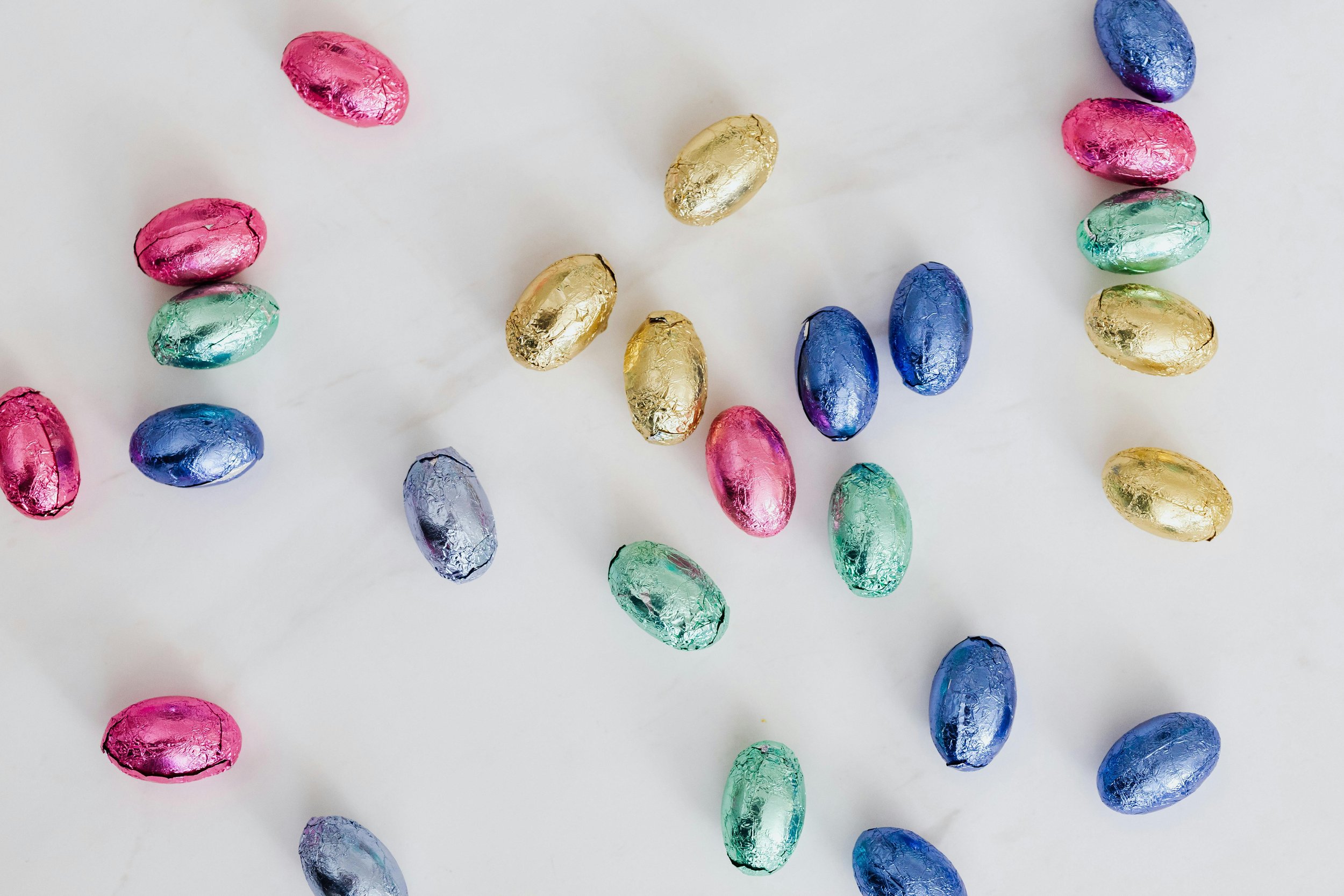Why Do We Give Easter Eggs?
Easter wouldn’t be Easter without eggs, whether they’re chocolate, painted, or plastic ones filled with goodies. But have you ever wondered how this egg obsession started? Why do we crack them open, hunt for them, or eat so many that we regret it later? The history of Easter eggs is a cracking good tale (pun very much intended), so let’s scramble our way through it!
Eggs: The OG Symbol of Life
Eggs have been a big deal for ages, like, way before chocolate eggs were a thing (hard to imagine, right?). In ancient times, eggs symbolised new life, fertility, and rebirth. They were the ultimate springtime metaphor, representing the earth bursting back to life after a long, dreary winter.
Ancient Persians and Egyptians used to give each other eggs during their spring festivals. Imagine the excitement, “Happy Spring! Here’s an egg!” They were ahead of their time.
When Christianity entered the picture, eggs took on a whole new layer of meaning. For early Christians, the egg symbolised Jesus’ resurrection. The shell represented the sealed tomb, and cracking it open? That symbolised His rise from the dead. Talk about an egg-citing metaphor.
Egg-cellent Medieval Traditions
By the Middle Ages, eggs had become an Easter staple, but not for the reason you think. Back then, people gave up meat, dairy, and, you guessed it, eggs for Lent (that’s 40 days of fasting and avoiding all the good stuff). But chickens didn’t get the memo, so by Easter, everyone had stockpiles of eggs just waiting to be devoured.
And because plain eggs are, well, plain, people started decorating them. At first, they were dyed red to represent the blood of Christ, but as time went on, people got creative with colours and patterns.
Ukrainian pysanky, those beautifully decorated eggs with intricate patterns, are so stunning they could be mistaken for Fabergé masterpieces.
How Chocolate Eggs Took Over
Let’s be real: as much as we love painted eggs, chocolate eggs are the real MVPs of Easter. But where did they come from?
The first chocolate eggs appeared in Europe in the early 19th century, starting in France and Germany. These were solid chunks of dark chocolate, so eating one was like gnawing on a cocoa brick. Then, in 1875, Cadbury cracked the code (pun intended again, sorry not sorry) with their hollow chocolate eggs. Suddenly, Easter treats became lighter, sweeter, and way more exciting to crack open.
Today, chocolate eggs come in all shapes, sizes, and flavours. From tiny foil-wrapped eggs to giant ones stuffed with more chocolate, they’ve turned Easter into a chocolate lover’s dream.
The world’s largest chocolate Easter egg was made in Italy in 2011. It weighed a whopping 7,200kg (15,873 pounds) and had a circumference of 19.6m (64ft) at it’s widest point, imagine hiding that in your garden!
The Easter Egg Hunt: A Game for the Ages
Egg hunts are one of the most beloved Easter traditions, especially for kids (and competitive adults). The idea of hiding eggs likely came from Germany, where the Easter Bunny, or Osterhase as it’s known there, was said to deliver eggs and hide them in nests. German immigrants brought this tradition to the United States in the 1700s, and it’s been a hit ever since.
Today, egg hunts range from backyard games with plastic eggs to massive community events featuring thousands of eggs. Some hunts even include golden eggs with extra-special prizes inside.
The Evolution of Chocolate Eggs: Sweet, Sustainable, and Surprising
Chocolate eggs have come a long way since their humble beginnings as solid blocks of dark chocolate. Today, they’re more diverse than ever, catering to every taste and preference. However, as people become more health-conscious and environmentally aware, the Easter egg market is evolving to meet new demands.
Health-Conscious Choices
While traditional chocolate eggs are still wildly popular, more people are exploring healthier options. Dark chocolate eggs with higher cocoa content (and less sugar) have become a hit among those looking for indulgence without the guilt. Some brands even offer protein-packed chocolate eggs or versions sweetened with natural alternatives like stevia.
Vegan Easter Eggs
The rise of plant-based diets has sparked a boom in vegan Easter eggs. Made without dairy, these eggs use oat, almond, or coconut milk to create creamy, chocolatey goodness. Vegan eggs are so delicious now that even non-vegans are giving them a try.
Non-Chocolate Alternatives
For those looking to skip chocolate altogether (yes, those people exist, we're not here to judge), the market has plenty of creative options. You’ll find everything from toy-filled plastic eggs to decorative wooden eggs. Some companies even offer “grow your own” kits, where the egg contains seeds to plant a flower or vegetable, a sweet nod to Easter’s theme of renewal and growth.
This adorable musical wooden Easter egg makes a great alternative to a chocolate Easter Egg.
The Future of Easter Eggs
As our tastes and priorities shift, Easter eggs are keeping up. Whether you’re indulging in a rich chocolate treat, trying a healthier twist, or gifting a non-edible alternative, the humble egg remains at the heart of Easter. And with options for every lifestyle, there’s no excuse not to join in the fun.
Whether you’re a chocolate purist or a health-conscious innovator, Easter eggs are here to bring joy, sweetness, and a little bit of tradition to your spring celebration. After all, some traditions are worth keeping—just maybe with a modern twist!














